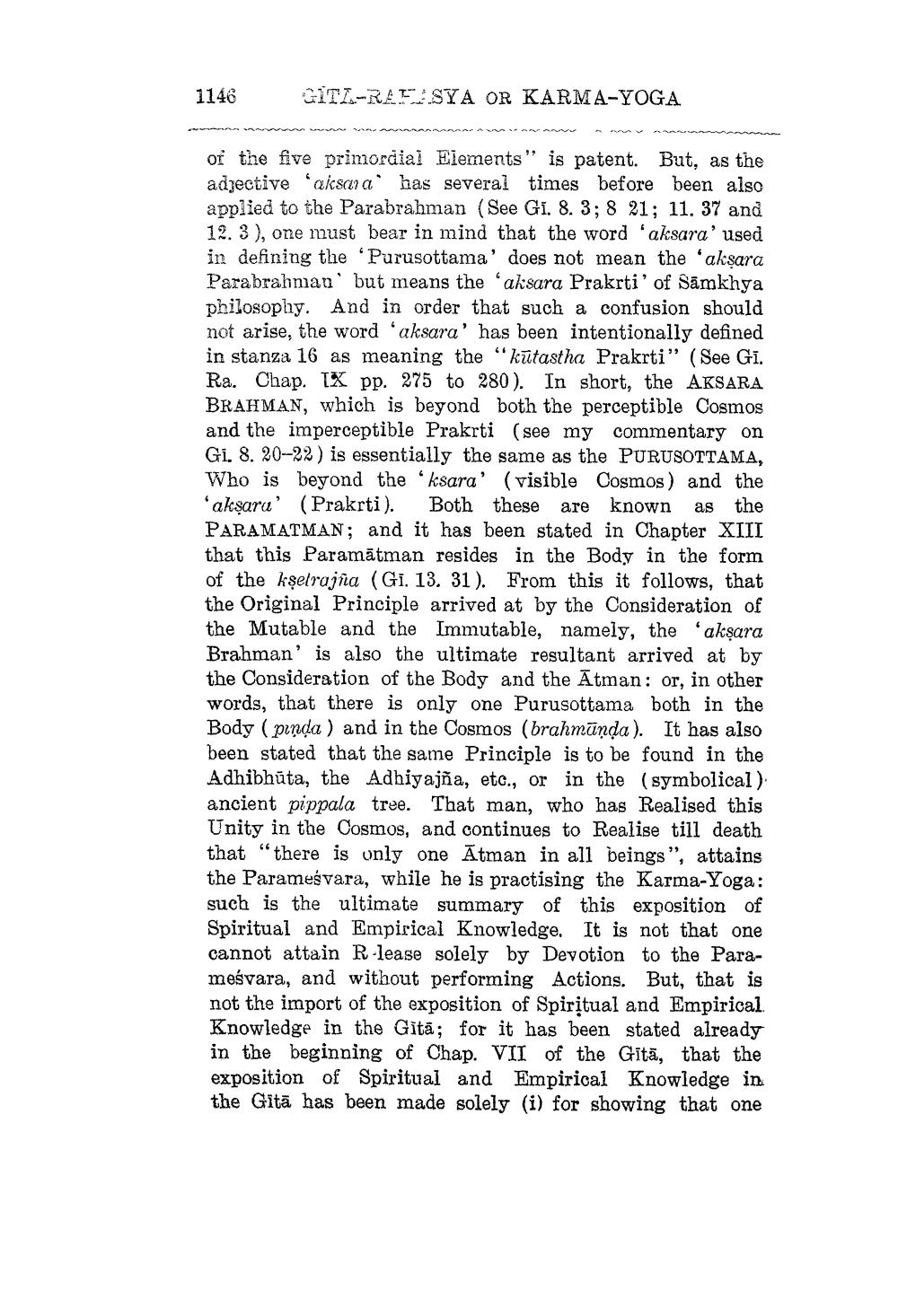________________
1146
GITI-RAF:SYA OR KARMA-YOGA
of the five primordial Elements" is patent. But, as the adjective aksara' has several times before been also applied to the Parabrahman (See GI. 8. 3; 8 21; 11. 37 and 12. 3), one must bear in mind that the word 'aksara' used in defining the 'Purusottama' does not mean the 'aksara Parabrahman' but means the 'aksara Prakrti' of Sāmkhya philosophy. And in order that such a confusion should not arise, the word 'aksara' has been intentionally defined in stanza 16 as meaning the “kūtastha Prakrti” (See Gi. Ra. Chap. IX pp. 275 to 280). In short, the AKSARA BRAHMAN, which is beyond both the perceptible Cosmos and the imperceptible Prakrti (see my commentary on Gi. 8. 20--22) is essentially the same as the PURUSOTTAMA, Who is beyond the 'ksara' (visible Cosmos) and the 'akşara' (Prakrti). Both these are known as the PARAMATMAN; and it has been stated in Chapter XIII that this Paramātman resides in the Body in the form of the kşetrajia (Gi. 13. 31). From this it follows, that the Original Principle arrived at by the Consideration of the Mutable and the Immutable, namely, the 'akşara Brahman' is also the ultimate resultant arrived at by the Consideration of the Body and the Ātman: or, in other words, that there is only one Purusottama both in the Body (pında ) and in the Cosmos (brahmānda). It has also been stated that the same Principle is to be found in the Adhibhūta, the Adhiyajña, etc., or in the (symbolical) ancient pippala tree. That man, who has Realised this Unity in the Cosmos, and continues to Realise till death that "there is only one Ātman in all beings”, attains the Parameśvara, while he is practising the Karma-Yoga: such is the ultimate summary of this exposition of Spiritual and Empirical Knowledge. It is not that one cannot attain R-lease solely by Devotion to the Parameśvara, and without performing Actions. But, that is not the import of the exposition of Spiritual and Empirical Knowledge in the Gită; for it has been stated already in the beginning of Chap. VII of the Gītā, that the exposition of Spiritual and Empirical Knowledge in the Gitä has been made solely (i) for showing that one




